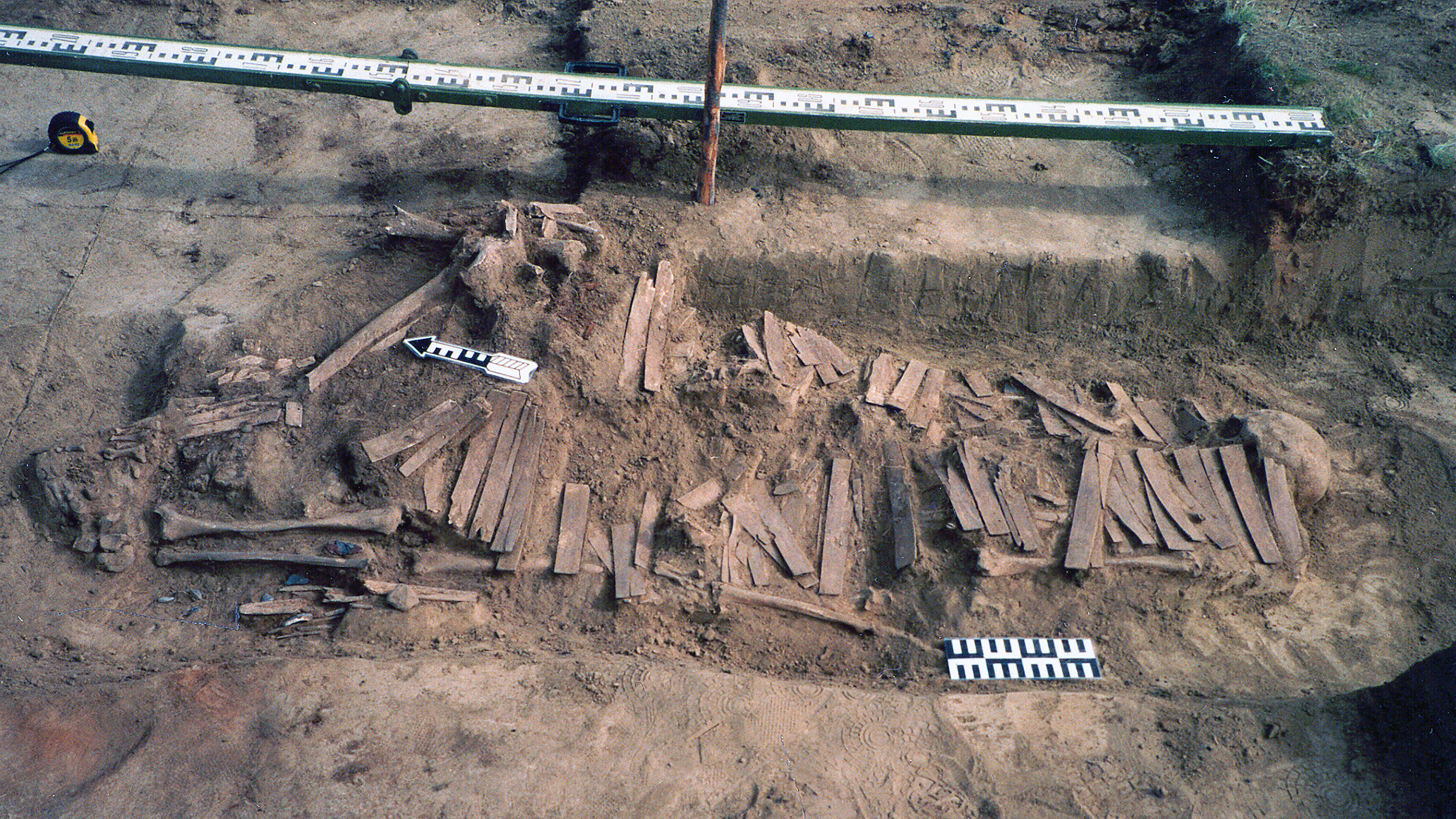New DNA Evidence Reveals Origins of Finnish, Estonian and Hungarian Languages
The study identifies an ancestral population in Central Siberia linked to the origin of Uralic languages.

Warrior funeral with bone armor plates in the Kyordyughen site in Central Siberia, from about 4,000 years ago. A similar plate armor was documented in the Seima Turboino site in Southwestern Siberia, which illustrates the western transfer of cultural traditions, in addition to Uralic languages, in connection with the Seima Turboino phenomenon. Photo credit: Aleksandr Stepanov.
Uralic languages, which includes Finnish, Estonian and Hungarian, are distinctly different from Indo-European languages that dominate much of Europe. So where in the world did this family of languages, spoken by about 25 million people, come from?
A new study published in Nature shows how ancient DNA enabled an international team of geneticists and archaeologists to reconstruct the prehistoric origins of two major Eurasian language families: Uralic and Yeniseian (now spoken only by the Ket people in Siberia). Based primarily on linguistic evidence, linguists have long believed that Uralic languages originated in the Ural Mountains of western Russia.
“Based on a very large collection of ancient DNA samples, our analysis places this origin thousands of kilometers further east, in Central Siberia and attributes the movement of a particular archeological culture, known as the Seima-Turbino phenomenon, as the major conduit through which this language spreads,” said study co-author Vagheesh Narasimhan, assistant professor of integrative biology and of statistics and data sciences at The University of Texas at Austin.
The team analyzed genomes from 180 ancient individuals from northern Eurasia, dated between 17,000 and 3,000 years ago. Their findings identify two ancestral populations that gave rise to these two language families: one from the Lena River Basin in eastern Siberia, which contributed significantly to nearly all modern Uralic-speaking populations, and another from the Baikal region in southern Siberia, associated with the genetic legacy of the Ket people.
The data indicate that a large belt of genetically related hunter-gatherers from the Late Stone Age, spanning from modern-day western Russia to eastern Siberia, was disrupted around 4,200 years ago as new groups moved in and mixed with them, resulting in the formation of new groups with lasting demographic and linguistic features. Some of these proto-Uralic people migrated westward through the millennia as far as the Baltic Sea, possibly driven by a vast trading network for bronze tools and weapons known as the Seima-Turbino phenomenon.
The study also suggests a potential genetic link between ancient Yeniseian speakers in Siberia and some Native American groups in North America.
“A language cannot be read directly from genomes, but when genetic ancestry, archaeological context and linguistic geography converge, robust inferences become possible,” the research team wrote. “Our results highlight the importance of multidisciplinary research and international collaboration in reconstructing complex prehistoric trajectories.”
The international team, led by Tian Chen Zeng (Harvard University), Leonid Vyazov (University of Ostrava), Alexander Kim (Harvard University), Ron Pinhasi (University of Vienna), Vagheesh Narasimhan (UT Austin) and David Reich (Harvard University), includes experts in genetics and archaeology and builds on over a decade of collaborative work and data collection across northern Eurasia.
Adapted from press releases by the University of Coimbra and the University of Vienna.



